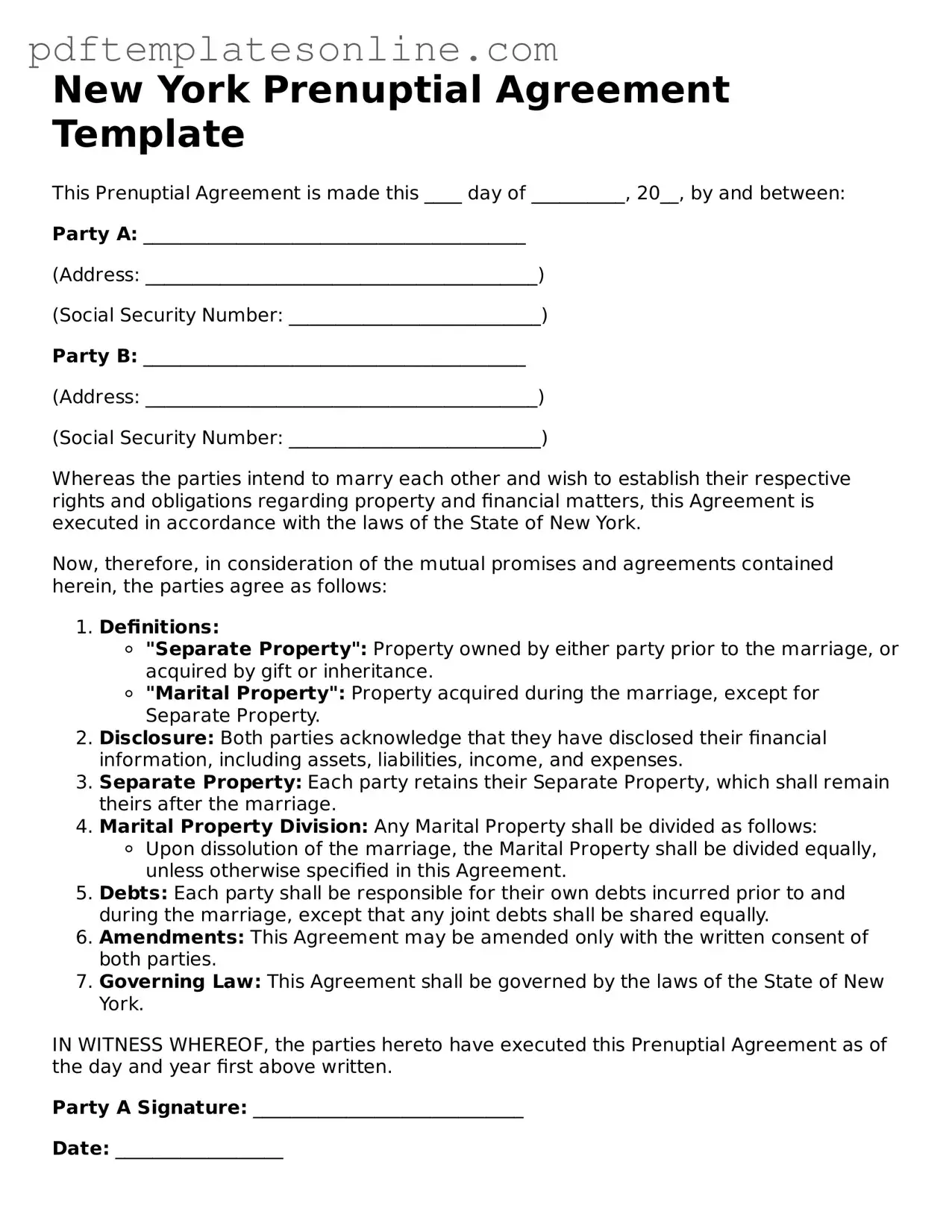When completing the New York Prenuptial Agreement form, individuals often make several common mistakes that can lead to complications later on. One frequent error is failing to fully disclose assets and liabilities. Transparency is crucial in a prenuptial agreement, as undisclosed information can render the agreement invalid. Both parties should provide a comprehensive list of their financial situations to ensure fairness and clarity.
Another mistake is using vague language. Specificity is essential when detailing the terms of the agreement. Ambiguous terms can lead to misunderstandings and disputes in the future. It is advisable to clearly outline what constitutes marital property versus separate property, as well as any other relevant financial arrangements.
People often overlook the importance of legal representation. While it may seem cost-effective to draft the agreement without professional help, this can lead to significant issues. Each party should consider having their own attorney review the agreement to ensure that their rights are protected and that the document complies with state laws.
Additionally, many individuals neglect to consider future changes in circumstances. A prenuptial agreement should be adaptable to life changes, such as the birth of children or significant career advancements. Including provisions for these potential changes can help avoid the need for future amendments or disputes.
Another common mistake is not having the agreement signed and notarized properly. For a prenuptial agreement to be enforceable in New York, both parties must sign it voluntarily, and it should be notarized. Failure to follow these steps can result in the agreement being challenged in court.
People may also rush through the process, leading to poorly thought-out terms. Taking the time to discuss and negotiate the terms thoroughly is essential. Both parties should feel comfortable with the agreement and understand its implications before signing.
Finally, individuals sometimes forget to review and update their prenuptial agreements periodically. As life circumstances evolve, so should the terms of the agreement. Regular reviews can ensure that the document remains relevant and effective in protecting both parties' interests.
